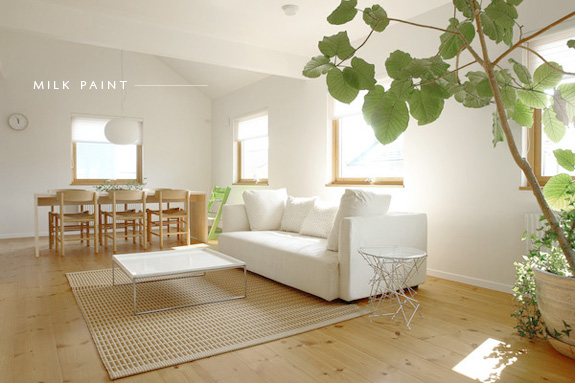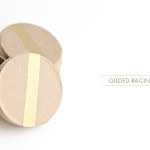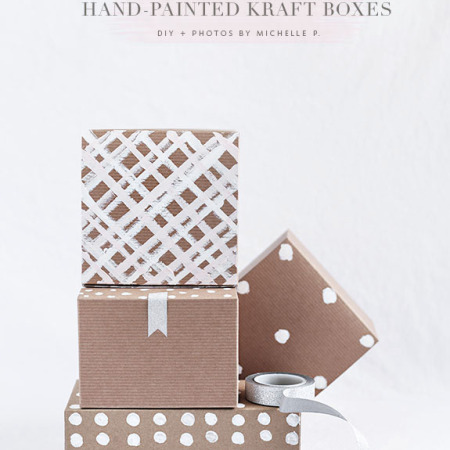 Painting is on my mind. It’s pretty much all I can think about which is a wonder that this post even got written because I was too busy trying to will my ugly (and may I add bumpy-shudder) walls a new bright white without me having to actually break out a roller. Another thing on my mind, is being green. It could be because Seattle is one of the greenest cities in the nation, losing top slot to our neighbor Portland. It’s the law here to be green, no seriously you need to recycle or go to prison or get publicly flogged or some such. In our (green) building we also compost and recycle heat from the roof, not that we need heat right now as it will be over 70 degrees all week, but I digress.
Painting is on my mind. It’s pretty much all I can think about which is a wonder that this post even got written because I was too busy trying to will my ugly (and may I add bumpy-shudder) walls a new bright white without me having to actually break out a roller. Another thing on my mind, is being green. It could be because Seattle is one of the greenest cities in the nation, losing top slot to our neighbor Portland. It’s the law here to be green, no seriously you need to recycle or go to prison or get publicly flogged or some such. In our (green) building we also compost and recycle heat from the roof, not that we need heat right now as it will be over 70 degrees all week, but I digress.
I have been spending a little too much time researching green/eco paint options, but I have learned that they aren’t all created equal. Even beloved Benjamin Moore’s eco line isn’t as eco as it could be–It’s no milk paint. Milk paint? Made from milk (but you figured that one out, right?) It’s the only paint I have found that is completely natural, safe, and no VOC’s. It also seems a lot more complicated than just rolling up to Home Depot and having them shake a couple gallons for you. It comes in a powder form that you mix with water to achieve consistency. In the past I have only seen it used on smaller projects such as furniture but lately several entries into the interior painting category have appeared and I am duly intrigued. It is a pricey paint, but we moved into a green building, in a green city (did I mention that?) and one of the caveats of all this green living is a smaller footprint/blueprint for our new living space. Much smaller. So I think the investment wouldn’t be too bad if I went this route. Have any of you tried this for your walls? Do you have another eco paint that you have tried that you liked? I honestly thought we were pretty eco-friendly before we moved here but it seems we were just silly novices; this city takes it to a whole new level and I am buying what they are selling, I think it’s pretty flippin’ fantastic.
MILK PAINT FOR WALLS RESOURCES:
Safepaint by the Old Fashioned Milkpaint Co.
MILK PAINT FOR FURNITURE RESOURCES:
The Old Fashioned Milk Paint Co.
P.S. A non-milk paint that is also zero VOC is made by Bioshield.
P.P.S. Any of you ever try renting or buying a sprayer for painting interior walls? I am thinking with the bumpy walls I may get uneven coverage with a roller and get white walls with horrid “yellow” specs. Thoughts?
Miss Tristan B. is the proprietress of Besotted Brand and the writer of this delightful blog. She recently re-located to sunny Seattle with her handsome husband and two pup.






I’m very interested in seeing what you decide but the idea of mixing huge quantites of my own paint would be enough to scare me off. Good luck!
It does seem daunting, right? My fear has been equal parts the mixing and the finish, but supposedly with the wall paints you can get a smooth non-chalky finish. Smooth being relative in my case since my walls are bumpy. If the ceilings weren’t so high I would probably attempt to sand them down even though we are renting but it would be seriously dangerous for me to attempt, the mixing would probably be dangerous as well I am not the best at ratios, lol.
I’d choose Chalk Paint over milk paint any day. It’s pricey, too, but it’s smoother and a whole lot easier to mix colors, especially if you’re doing it on a large scale. I was sold on milk paint for furniture until I tried the Chalk Paint. That’s when I knew I was never going back…and it’s not NO VOCs, but extremely low. It also doesn’t smell like urine (as milk paint does), which is a big plus when you’re painting walls. As for the finish, you will get probably get a matte finish with the Chalk Paint (though I’m not sure if it’s more matte than the milk paint) unless you wax it, which seems unlikely. But it’s breathable like Milk Paint as well.
Oh, and one other thing – You would need to add a bonder to get the milk paint to stick to a previously painted wall. With Chalk Paint, you wouldn’t even need to use primer.
http://www.anniesloanunfolded.com/products/chalk-paint
I didn’t know you could do large scale projects with the Chalk Paint, I did just buy this behemoth computer armoire that I plan to try my hand at chalk paint with, it’s currently a big dark spot in my life that needs a makeover STAT! I didn’t know that the milk paint smells like urine! I heard it had a smell but I was assuming a milky smell, urine, no thank you!
Ah, I didn’t read that thank you!!!
I LOVE MMS milk paint but I’m not sure I’d use it on my walls. Maybe if I were using some sort of finish over it but I shudder to think of waxing all my walls. My experience with milk paint is that without a sealer over it it won’t hold up well to wear and tear. And definitely not to water when it comes time to wash it.
We sprayed our textured ceilings…they turned out wonderful! There are special rollers for textured walls.
***
I hope you and your love were able to enjoy yesterday’s weather! My favorite days in the Pacific Northwest are those with sunshine after a overnight rainfall. Pure fresh air!
~Lynne
withLove!
Ooops…I must have missed the part about you not wanting to use a roller! Sorry!
w/L.
I have no experience with the paints you mentioned, but I definitely like the finish and durability of the low VOC paints I have used in the past from Sherwin Williams. They aren’t as green as you are wanting, tho, I am guessing.
They do make rollers with a longer nap for textured walls. You shouldn’t have any problem with coverage if you are using a high quality paint and the right roller. These rollers really soak up the paint and put it down on the wall. I always do two coats of paint because there are bound to be small skips here and there. Two coats gives you the best finish.
I wouldn’t recommend spraying interior walls because you have to have more equipment, there’s more of a learning curve, and it’s more likely to result in uneven coverage. Spraying is trickier than rolling. I think you would notice your starts and stops more on a sprayed wall (especially in different lights). This may all be more than you asked for, but I thought I would chime in with my experience. Good paint and the right tools make all your hard work worth it in the end! :)
Ooh, love it. Plus all white makes s space seem so…well, spacious. ;)
I definitely would not use Milk Paint or Chalk Paint on my walls. Chalk Paint is flat, flat, flat and can go on quite unevenly. I would also worry that if you rubbed the walls (say you had to wash something off them) you would get a different sheen on that spot-unless you plan to add a wax protector which you rub on and off by hand! I think you can find a balance between something totally natural like milk paint and a more eco friendly paint. As far as rollers go, you can buy rollers with more of a nap and they are identified as for a textured surface. I beg you, no Milk or Chalk paint on the walls!!
The paint from Old Fashioned Milk Paint Co. works beautifully on furniture, and the people at that company are great! They will answer question and give you tips for your project over the phone. They also make a special formula or additive that bonds to sheetrock better than plain milk or other chalky paints and it would be A-OK on walls (I think the super matte finish is quite lovely). That said, I would not suggest using it in a sprayer, it will clog every two seconds and it kind of leaves stripey like unevenness in the finish. A thick nap roller would probably handle texture with an even coat to boot! I just finished restoring an old farmhouse with all bead board walls and the thick roller even worked on those.
I am now thinking that I need to look into something else for the walls, but I do want to try on furniture!
Lynne, I didn’t know about the special rollers that everyone keeps mentioning this makes me so happy! I was so worried about speckled walls! And yes, the air here, wow! We have been having beautiful sunny days, trying to just appreciate them and not take them for granted like I did in California;)
No, I am interested in the sprayer but it sounds like there’s room for error, so now I am scared, lol!
Amber I keep hearing horror stories about the sprayer so I am going to try the special rollers, which I had no idea existed. I will check out the Sherwin Williams and see how green it might be, I do like the idea that someone has tried it and had great results!
I agree, it will make the very tiny space seem larger, especially with the tall ceilings. I am hoping for extra brightness too, we need it in the PNW!
I would LOVE to see your farmhouse restoration! What is your experience with the smell? Is it as bad as everyone says?
Dianne I am going to try on apiece of furniture first before the walls, I really want to try the Chalk paint my friend has created so many beautiful pieces with it!
Question about your rental! Are the landlords going to cover the cost? Because they may have options available for you.
Can’t wait to see how it turns out!
I just painted one wall with Old Fashioned Milk Paint’s Safe Paint. I liked how it looks. The finish is very matte. I used Snow White and it had good coverage. I plan to repaint my whole apartment with Safe Paint. I just need to decide on the the colors. :-)
I’ve been slowly converting everything in my house to organic based products. First I started off with my food, and then clothes. Now, I want to remodel my house to not only be organic, but to incorporate as much green technology as possible. After researching tons of organic clay paint, or milk paints, I’ve decided on my brand and now I just need to pick out colors. What color’s would you suggest for a room with a medium grey carpet?
Send a link to the walls, would love to see!
Lol, I think you would know better than me working at the company, but I always love white;)
I painted two rooms with organic caseine paint some 15ish years ago. Not onto bare walls, as that is rather uncommon in German rental appartments, but onto medium-grained ingrain wallpaper (no dissing this kind of wallpaper, please… it’s not as ugly as some claim it is).
My paint powder is being made by “Kreidezeit” and had to be mixed with curd cheese (Quark, in German), Borax and water, plus desired pigments for colour. Beautiful texture and really easy to work with, even on huge walls. The smell was slightly milky-sourly, very subtle and not yucky at all, and it quickly stopped after the paint had thoroughly dried.
As far as I know, milk or caseine paint that begins to smell like urine (ammoniacish) has been prepared improperly or stored wrongly. Another possibility is that it reacted with a chemical that has been in the wall or have come into contact with the paint. Lastly, caseine paint and humidity don’t go well together either and can attract mould.
Hello, Miss Tristan B.! I was just wondering if you could tell me which color of the safepaint milkpaint you used in the room pictured above. Was it the snow white or the cream? Thanks!
Hi All,
I’ve painted now interior walls of two houses with milk paint. I love the chalky Matt finish, it reminds me of old plaster walls. I’ve rolled and brushed. Brushing can be streaky, so I’ve put it on swirling the brush in big curves. This way and that. It’s not that noticeable but if you do catch it, the streaks then seem intentional. You can roll first to apply, then brush in a pattern. I didn’t strain my milk paint but straining would make it smoother even still.
No smell after it dries and didn’t smell like urine at all ! I painted the bathroom too. Water splashes just dry, but I would be careful with soapy splashes. I never did seal my paint in the bathroom, but I use the fan. I had even washed them a bit in places with just water and you couldn’t tell after they dried.
I used paint from the Old Fashioned Milk Paint Company.
We are looking to paint out 2200 sq. ft. interior with milk paint. The walls are already painted with latex paint with some dark colors. If anyone has painted their house completely with milk paint in the past, please send me some information on it.
– Which paint to use?
-If to use bonding agent?
-How durable it is?
– We live in Florida, so how is the Milk paint hold’s up in High Humidity weather?
-Will the finish be grainy, as in scratchy or smooth?
-How does it hold with kids crayons and paints etc?
-Do we need to finish the paint with any bond or oil for long term usage?
Any other information you all can provide will be really helpful to us. I really appreciate it.
Thank you.